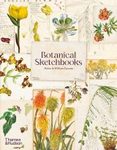Flora / Fauna Identification Key
By: Gilberto Morillo(Editor), Benito Briceño(Editor), Juan F Silva(Editor)
778 pages, colour photos, b/w line drawings
![Botánica y Ecología de las Monocotiledóneas de los Páramos en Venezuela (2-Volume Set) Botánica y Ecología de las Monocotiledóneas de los Páramos en Venezuela (2-Volume Set)]()
Click to have a closer look
About this book
Customer reviews
Related titles
About this book
Language: Spanish
This book – Botánica y Ecología de las Monocotiledóneas de los Páramos en Venezuela – (in two volumes), describes the diversity of monocotyledons in the Venezuelan paramos and their ecotones, gathering for the first time, a great amount of information already published, and presenting new taxonomic and ecological data. A total of 22 families, 20 of them of natural occurrence in paramos (two of exotic origin), are treated within Botánica y Ecología de las Monocotiledóneas de los Páramos en Venezuela. Eight chapters are included in the first volume. The first contains general information on the paramo ecosystem; the second includes delimitation and description of the monoctyledons, and a key to the families, and finally, six families are treated in the last six chapters.
The second volume of Botánica y Ecología de las Monocotiledóneas de los Páramos en Venezuela comprises the taxonomic treatment of 16 families, a glossary of botanical and ecological terms, and a list of bibliography cited. Descriptions for all families and genera are provided. For most families, keys and/or commentaries on key characters, help to identify genera and species. Within the work a total of 141 genera , and close to 600 species are listed, and many of them described and illustrated. The most important monocot families in the area are: Orchidaceae, with 49 genera and 226 species, Poaceae, with 55 genera and 205 species; Cyperaceae, with 8 genera and 52 species, and Bromeliaceae, with 8 genera and 40 species. At least 40 species of monocots are considered as endemic to the Venezuelan Andes. A new nomenclatural combination (Calamagrostis meridensis (Luces) B. Briceño) is proposed within the Poaceae.
Customer Reviews
Flora / Fauna Identification Key
By: Gilberto Morillo(Editor), Benito Briceño(Editor), Juan F Silva(Editor)
778 pages, colour photos, b/w line drawings







































